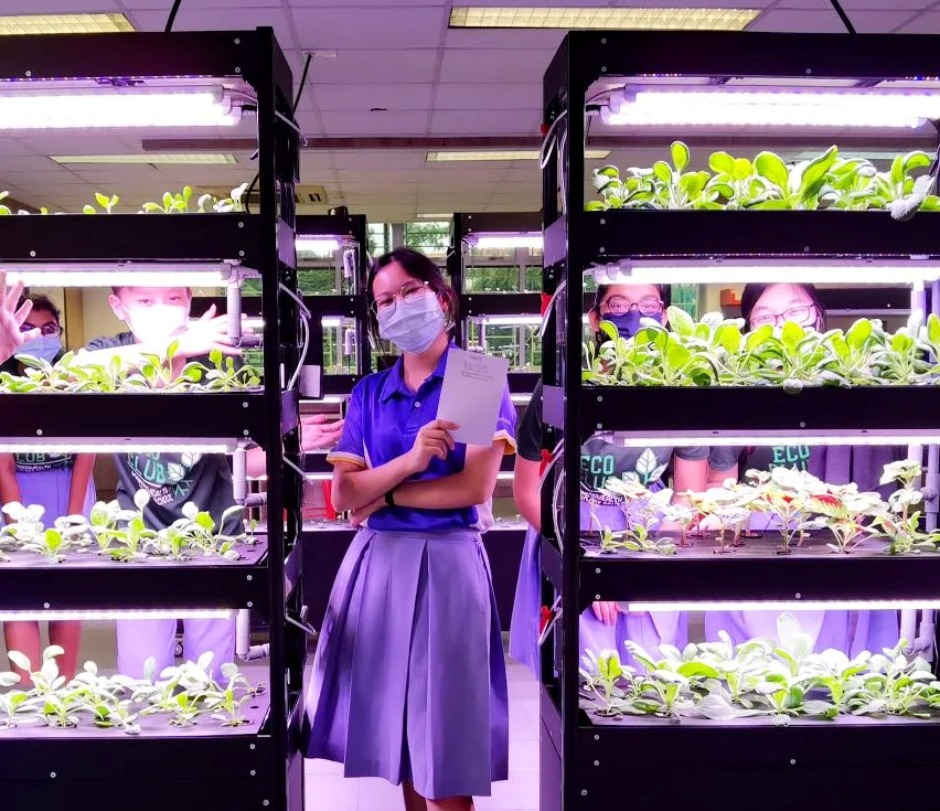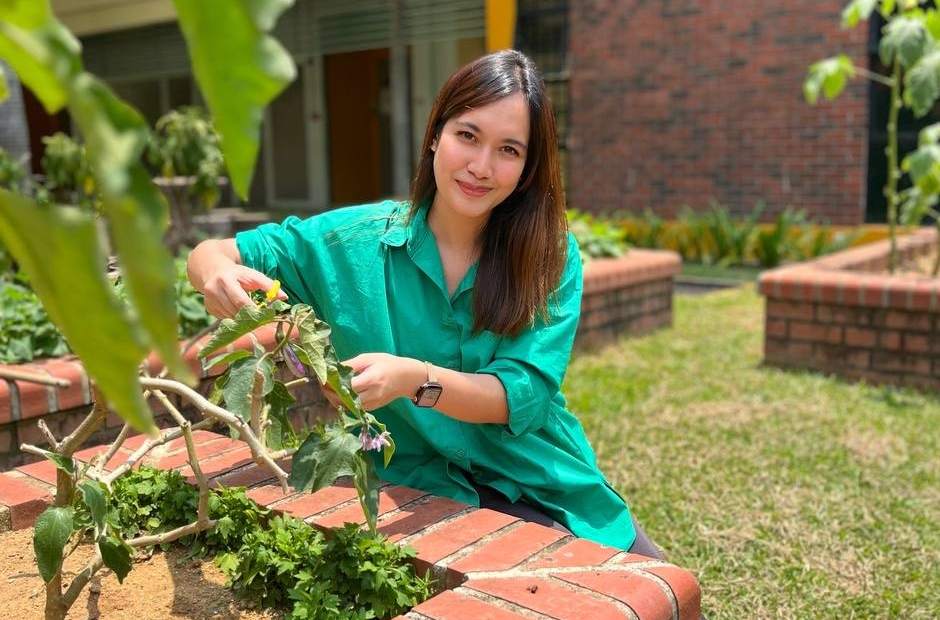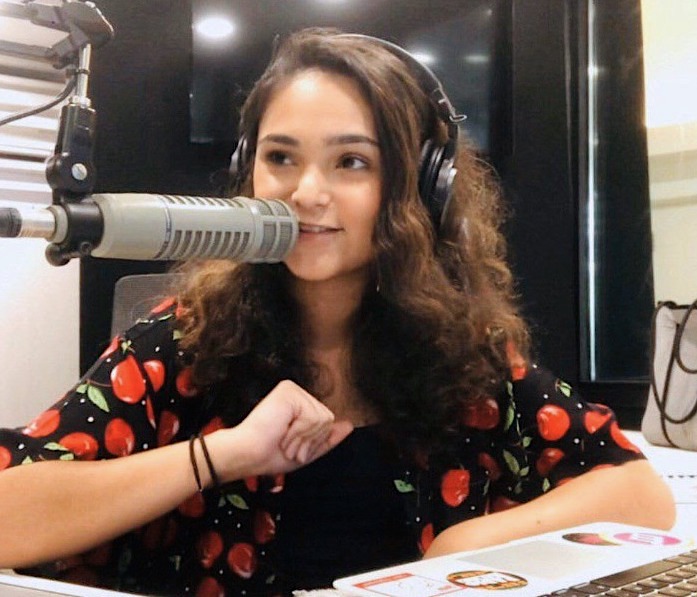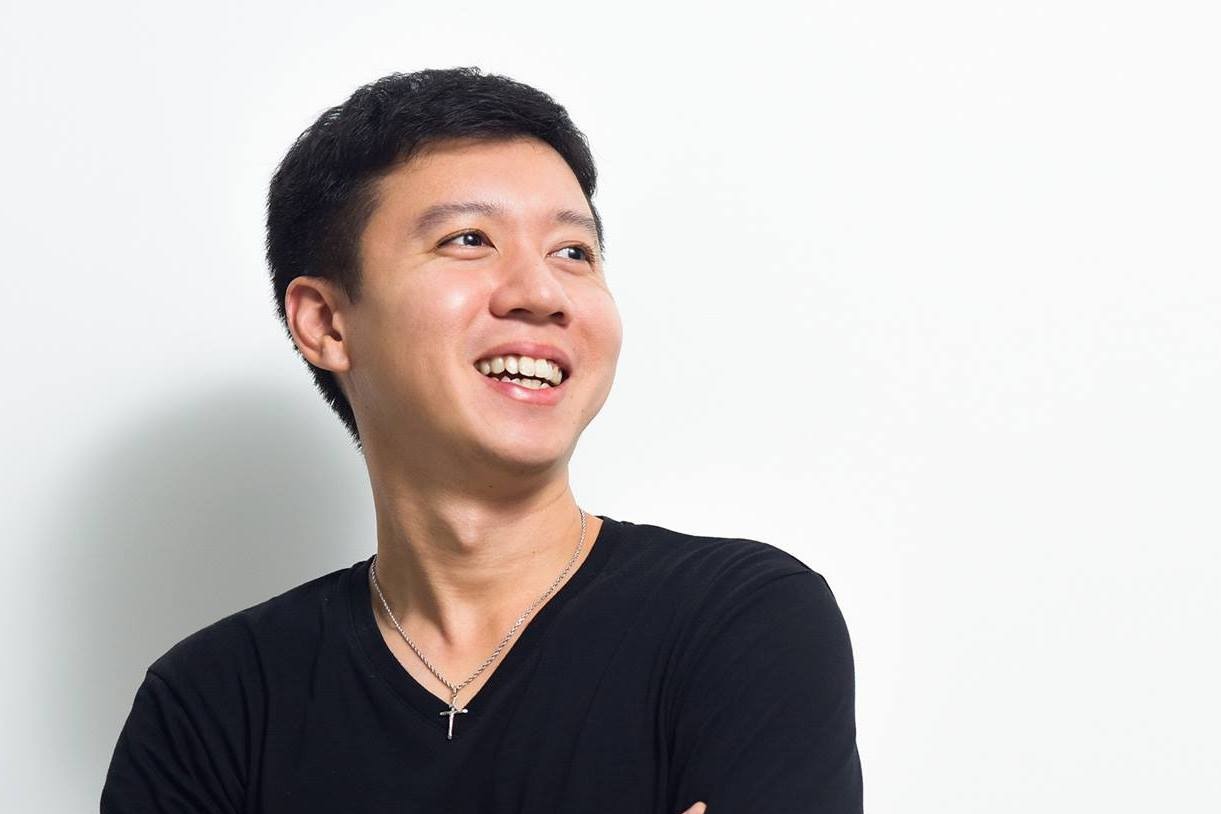A year ago, if you asked Sam Pei Yi where she planned to go after secondary school, she would have said “junior college”.
Or, she may have said “polytechnic”. She was in Secondary 4, and she had to decide soon between the two options, but she wasn’t sure what area of study was right for her.
Yet, after months of vacillation, Pei Yi would answer with utmost confidence. She was so keen on Republic Polytechnic’s (RP) Diploma in Environmental & Marine Science, she put in an application through the Early Admissions Exercise – and secured a spot.
Her firm decision came as a surprise to those who know her as someone who has so many interests. “I never had a solid plan. I just go with whatever captures my attention,” says Pei Yi. But now she knows to follow where fish will take her.
What? Fish? Let’s trace her steps to how she made her school and course choices. Be warned, it’s a winding path!
Not wanting to settle for the obvious
From the start, Pei Yi knew that a course related to sustainability was the most obvious choice, since her CCA and portfolio in secondary school spoke to that field. But, she starts to explain, “I didn’t know if sustainability was something I’d want to stick with forever…since I’d done it for so long, I wanted to explore other options”.
Should she try other “science-related stuff”, like psychology? What about philosophy, since she enjoys thinking about how people think? At the same time, she considered junior college (JC) as an option, which was broader-based for if she wasn’t ready to commit to a course just yet.
“I’d never seen so many fishes in a school before”
While exploring her options, Pei Yi got to know about RP’s Environmental & Marine Science diploma.
“I was flipping through the poly and JC prospectuses, shortlisting what I liked, when I saw this; it had ‘environment’ in the name,” says Pei Yi.
Off she went to research more about the course, and lo and behold, she found that RP had a big fishery, known as the Aquaria, which was a dedicated marine science and aquaculture teaching and research facility. What caught her eye was “its diverse marine life and state-of-the-art technology”.
“I’d never seen so many fishes in a school before. And I really like fish!” she says.
Why fish? Because a sea teeming with fish is a sign of life and hope – she cares about marine wildlife and its health in general, she elaborates; water bodies make up 71% of our Earth’s surface, and there is still much we don’t know about it. “We cannot protect something we do not love, we cannot love what we do not know,” she quotes nature writer Richard Louv.
“RP’s Aquaria caught my eye also because of its frequent collaborations with industrial partners to address current and hot topics in the aquaculture industry,” explains Pei Yi. “I wanted the invaluable first-hand experiences in scientific investigation and critical thinking to help me stay relevant.” It didn’t take long after for her to be sure of her post-secondary pathway. “This is it!” she thought aloud. Or is it?
Connecting back to her roots in green living
Growing up, Pei Yi was no stranger to life on the green side. Trips to the zoo or outdoor hikes were common growing up, on which her parents would point out the different types of animals and plants they crossed paths with. Recycling was also a family habit.
As a student in Rulang Primary, she joined their Green Club, where she learned how to care for plants. And in Primary 5, she came across Commonwealth Secondary School’s (CWSS) Eco Club at its open house. “They showed me all their biodiversity samples and I thought they were so cool,” says Pei Yi of the collection of organisms found dead in school, such as butterflies, bees, and grasshoppers. CWSS keeps them on display and tracks them through the school’s Instagram page and hashtag #cwssbiodiversitymuseum. Applying to CWSS, and its Eco Club, was a no-brainer for her after completing primary school.
The Eco Club was where Pei Yi’s interest in biodiversity blossomed. She gives much of the credit to the Club’s teacher-in-charge, Mr Jacob Tan.
Pei Yi recalls how Mr Tan inspired the club’s members to care for the school’s garden, rainforest, and other nature plots. After years of work and tender care, the school is now a wildlife haven. Birds like pink-necked green pigeons and the yellow-vented bulbul have come to call CWSS home, and the school has even been visited by monitor lizards and golden tree snakes.
 A pink-necked green pigeon nesting in Commonwealth Secondary. (Photo credit: Commonwealth Secondary School)
A pink-necked green pigeon nesting in Commonwealth Secondary. (Photo credit: Commonwealth Secondary School)
During one particularly golden teaching moment, Mr Tan called to his students when he found a bird that had flown smack into a classroom window and died, highlighting the hazards when wildlife meets urbanisation.
 Mr Tan showing students how the accident could have happened (left) and the dead bird he found (right).
Mr Tan showing students how the accident could have happened (left) and the dead bird he found (right).
Moved by the bird’s death, Pei Yi and her schoolmate started a project to prototype some non-reflective stickers that could be pasted on windows and reduce such collisions. She created these stickers in the school’s Design Space with the help of a laser cutter machine.
 Pei Yi’s sticker prototypes for windows to prevent other bird deaths.
Pei Yi’s sticker prototypes for windows to prevent other bird deaths.
Building a portfolio – useful for EAE!
Looking back at her secondary school activities, Pei Yi realised that she had a rich portfolio of experiences she could pack into an application to a sustainability-related course over any other field – yet another good reason for applying to the RP diploma programme.
For instance, through the Eco Club’s outreach activities, Pei Yi got to work with World Wide Fund for Nature (WWF) for an Earth Day campaign and see the work of related companies and what the wider industry looked like. She also ran booths at events to educate the public on sustainability, such as Clean Up South West in 2020 and the Clean and Green Singapore carnival, where she made public presentations on upcycling.
 Pei Yi in a WWF photoshoot, raising awareness for an Earth Day campaign.
Pei Yi in a WWF photoshoot, raising awareness for an Earth Day campaign.
 Pei Yi at Clean Up South West 2020. The plastic bottles form what is known as an ‘eco brick’, where plastic bags and bottles are used to build solid structures.
Pei Yi at Clean Up South West 2020. The plastic bottles form what is known as an ‘eco brick’, where plastic bags and bottles are used to build solid structures.
 Pei Yi represented CWSS to contest for the Eco-Schools Green Flag Award, an international eco-label of school performance run by WWF.
Pei Yi represented CWSS to contest for the Eco-Schools Green Flag Award, an international eco-label of school performance run by WWF.
Members of the Eco Club are also designated caretakers of the school’s six eco-habitats as well as the indoor and outdoor farm, which includes farming in the edible garden – one of Pei Yi’s favourite things to do.
 A bountiful harvest from the school’s garden! This is what Pei Yi gathered for the day’s use. Students can cook the veggies during Food and Consumer Education lessons, or give them to the canteen vendors for their dishes.
A bountiful harvest from the school’s garden! This is what Pei Yi gathered for the day’s use. Students can cook the veggies during Food and Consumer Education lessons, or give them to the canteen vendors for their dishes.
Finally, Pei Yi was glad she signed up for CWSS’ STEM Elective in Secondary 3. The elective – which is non-examinable and taken in place of an eighth subject in upper secondary – aims to make students confident science communicators and researchers. Students are exposed to partnerships with organisations like the National Parks Board, Singapore Food Agency, and the Public Utilities Board to learn about nature conservation, food security, and how to manage our water and energy resources. They get first-hand experience in STEM-related careers too, thanks to learning journeys and attachments that the school organises during the holidays.
In the Elective, students learn how to design research projects and choose a topic of interest to study over the course of two years. Their work culminates in a capstone research project in Secondary 4, which students must present on at a STEM Conference in school. This is part of CWSS’ efforts to support students to nurture the joy of learning, learn for life instead of exams, and build 21st-century competencies.
Through the weekly lessons, she learned how to read research papers, conduct a literature review, and engage in debates on sustainability and science.
 STEM Elective students work on a capstone project in Secondary 4, culminating in a STEM Conference. Topics ranged from ‘How do fonts affect our memory?’ to Pei Yi’s topic, ‘Difference in the rate of photosynthesis between plants adapted to different irradiance levels’. (Photo credit: Commonwealth Secondary School)
STEM Elective students work on a capstone project in Secondary 4, culminating in a STEM Conference. Topics ranged from ‘How do fonts affect our memory?’ to Pei Yi’s topic, ‘Difference in the rate of photosynthesis between plants adapted to different irradiance levels’. (Photo credit: Commonwealth Secondary School)
With all these experiences under her belt, it became pretty obvious to Pei Yi that she should apply to the Early Admissions Exercise (EAE) for the RP course.
The final decision came easy
The months of hand-wringing were over. “I was determined that this was the course and route I wanted to go down, and going through the EAE would increase my security of a spot in the course,” she says. “Having been blessed with the opportunities of school-based, national and international experiences, not only was my choice further concretised, but I had also accumulated a pretty solid portfolio.”
Her advice for her juniors? “Follow your passion, get in touch with people in the industry, you can go volunteer or visit open houses, and just talk to lots of people!” she says. “You’ll only know after you try.”






